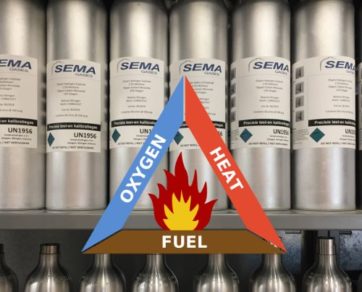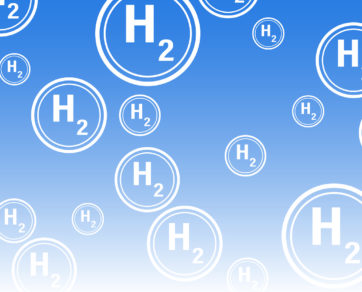A gas detector detects the presence of gases in an area. When the gas concentration exceeds the set alarm value of the sensor, the gas detector gives a sound alarm, shows a visible alarm and indicates the measured gas concentration on the display of the gas detector. Gas detectors can detect combustible gases, oxygen and toxic gases. Common sensor types which are used in gas detectors are electrochemical sensors, catalytic sensors, photoionisation (PID) sensors, infrared sensors, galvanic sensors and semiconductor sensors.
Electrochemical sensors
With an electrochemical sensor toxic gases such as CO, H2S, NH3, Cl2, NO2, SO2, etc. can be detected. An electrochemical sensor works by gas that flows into the sensor through a porous membrane to an electrode where it is oxidised or reduced. The amount of current produced is determined by how much of the gas is oxidised at the electrode, indicating the concentration of the gas.
Catalytic sensors
With a catalytic sensor combustible gases can be detected. The catalytic sensor consists of two platinum wire coils each embedded in a bead of alumina which is connected electrically in a Wheatstone bridge circuit. The active bead contains a catalyst that allows combustible compounds to oxidise, thereby heating the bead even further and changing its electrical resistance. The resulting voltage difference between the active and the passive beads is proportional to the concentration of all combustible gases and vapours present. The catalytic sensor requires a minimum of 12% of oxygen in the atmosphere for oxidation. The catalytic sensor can be poisoned by compounds such as silicones, mineral acids, chlorinated organic compounds and sulfur compounds.
Photoionization (PID) sensors
A PID sensor detects the concentration of volatile organic compounds (VOCs) present, toxic gases and/or vapours expressed in parts per million (PPM). A PID sensor does not detect gas or compound specifically. All VOCs are displayed as one common value on the display of the PID detector. In a PID detector, the gas to be measured is exposed to high-energy photons, usually in the UV range. The molecules in the gas sample temporarily lose an electron as soon as the molecules come into contact with the electromagnetic radiation. As a result, positively charged ions are formed.
The gas is electrically charged, and the ions generate an electric current. This delivered electricity is the basis of the measurement signal of the PID detector. The basic measurement signal is amplified in the PID detector and converted to a measured value in ppm. A PID detector detects all gases with a lower IP value than the lamp with which the PID detector is equipped. To specify the read value on a particular gas, the basic measurement signal must be multiplied by the response factor associated with the specific gas. This is a conversion factor of the measured gas in relation to the gas on which the PID meter is calibrated (usually 100 ppm isobutylene).
Infrared (IR) sensors
With infrared sensors, hydrocarbons and other infrared active gases such as water vapour and CO2 can be detected. An infrared sensor uses radiation passing through a known volume of gas. Energy from the sensor beam is absorbed at specific wavelengths depending on the properties of the specific gas. The energy in this wavelength is compared to a wavelength outside of the absorption range. The difference in energy between these two wavelengths is proportional to the concentration of the present gas.
Galvanic sensors
With a galvanic sensor, oxygen can be detected. An electro-galvanic fuel sensor is an electrochemical sensor which consumes a fuel to produce an electrical output by a chemical reaction.
Semiconductor sensors
With a semiconductor sensor hydrogen, oxygen, alcohol and harmful gases such as CO can be detected. A semiconductor sensor is also used in breathalysers. A semiconductor sensor detects gases by a chemical reaction that takes place when the gas comes in direct contact with the sensor. The electrical resistance in the sensor is decreased when it comes into contact with the gas. This change in resistance is used to calculate the gas concentration.



